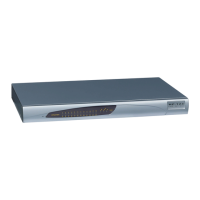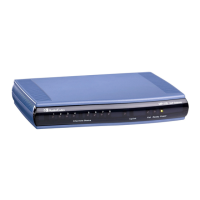9 Configuring Certificates
The Certificates page is used for configuring secure communication with the device, using
HTTPS and SIP Transport Layer Security (TLS). This page allows you to do the following:
Regenerate keys and self-signed certificates - see 'Self-Signed Certificates' on page
98
Note: The device is shipped with an active TLS setup. Thus, configure certificates
only if required.
9.1 Replacing the Device's Certificate
The device is supplied with a working TLS configuration consisting of a unique self-signed
server certificate. If an organizational Public Key Infrastructure (PKI) is used, you may wish
to replace this certificate with one provided by your security administrator.
To replace the device's certificate:
1. Your network administrator should allocate a unique DNS name for the device (e.g.,
dns_name.corp.customer.com). This DNS name is used to access the device and
therefore, must be listed in the server certificate.
2. If the device is operating in HTTPS mode, then set the 'Secured Web Connection
(HTTPS)' parameter (HTTPSOnly) to HTTP and HTTPS (see 'Configuring Web
Security Settings' on page 67). This ensures that you have a method for accessing the
device in case the new certificate does not work. Restore the previous setting after
testing the configuration.
3. Open the Certificates page (Configuration tab > System menu > Certificates).
4. Under the Certificate Signing Request group, do the following:
a. In the 'Subject Name [CN]' field, enter the DNS name.
b. Fill in the rest of the request fields according to your security provider's
instructions.

